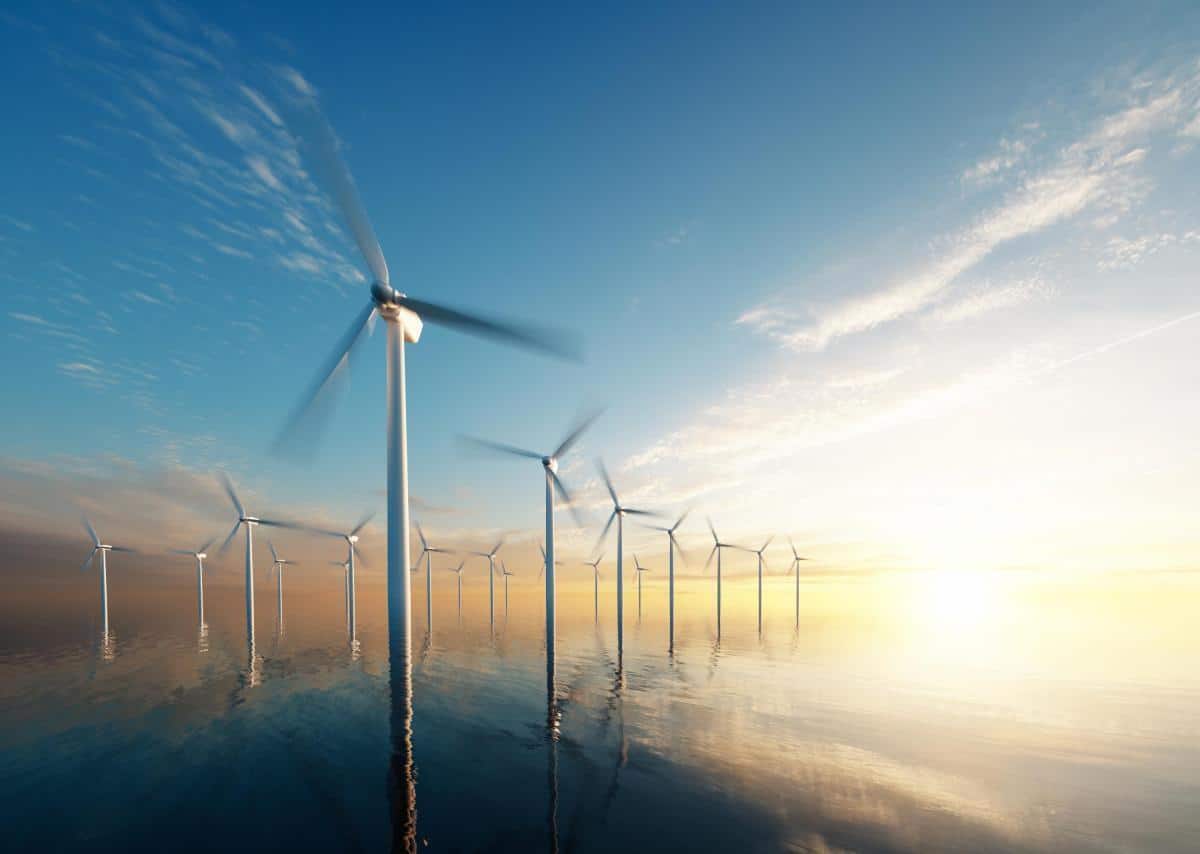Expert Talk: Why are HVDC grids essential for the renewable energy transition?
This Expert Talk will discuss why HVDC technology will be essential in the future to ensure stable and reliable operation of the power system at an affordable cost.
Written by Hakan Ergun, Research Expert Decision Support for Grid Operators at EnergyVille/KU Leuven and Jef Beerten, professor at EnergyVille/KU Leuven.
In the past, High-Voltage Direct Current (HVDC) technology was mainly used for bulk power transmission over long distances above 500 km and due to advantages in improving network stability and low transmission losses as well as for submarine connection of asynchronous networks. To date, the longest and highest rated transmission system is realized in HVDC technology. The Changji – Guquan link in China with a power transfer capability of 12 GW spans over more than 3000 km. As a comparison, the average peak power demand of Belgium is approximately 13,5 GW.
Over the last 15 years, HVDC technology has found a large number of new applications such as connecting offshore wind farms, mainly due to rapid developments in voltage source converter (VSC) technology and XLPE underground / submarine cables. Using VSC technology, HVDC links have become an important alternamiteve to traditional onshore grid expansion projects . The INELFE link between Spain and France and the ALEGrO link between Belgium and Germany are important examples of such projects, where VSC HVDC has been chosen over classical AC technology for technical, environmental and economic reasons.
The development of VSC converter technology has also opened the door to connect multiple HVDC links to a meshed network, which could serve as an overlay network in the future [1]. In China, where more than 20 HVDC links across the country have been developed over the past decades, the first meshed HVDC grid in Zhangbei using VSC technology has been put in operation in 2021 [2].

Hernieuwbare energiebronnen, de noodzaak van netuitbreiding en de rol van HVDC-netten
According to the International Renewable Energy Agency, to date more than 20 GW offshore wind capacity has been installed globally, and the expectation is to reach 230 GW in 2030. Most developments will take place in Europe, but also Asia is expected to enlarge its offshore wind developments to become the largest market for offshore wind by 2030 [3]. According to WindEurope, up to 450 GW of offshore wind can be expected by 2050 in European waters [4].
HVDC technology is essential for the connection of offshore wind to the main transmission network. Connecting such large quantities of new renewable generation to the electricity grid will be accompanied by significant network investments. They will be necessary, not only to connect remote energy sources to demand centers, but also to allow for an increased transnational interconnection providing multiple paths for the increased power flows and avoiding expected congestion of the existing electricity transmission network. One such idea is the interconnection of North Sea countries using a meshed HVDC network for integrating offshore wind power on one hand, and fostering electricity exhanges between these countries on the other. In addition, the renewable generation replacing classical units is connected through power electronic converters, which will require new innovative approaches and long-term investments to enhance the stability of the electricity grid to cope with a decrease in power system inertia. HVDC technology can provide a range of solutions for to enhance the stability of the system [5].
HVDC technologie neemt een hoge vlucht
In the light of this massive deployment of renewable power-electronic based generation, meshed HVDC networks will play a key role to allow for an affordable and reliable electricity transmission on a European scale. At this moment, DC technology is on the rise worldwide. Figure 1 shows the power and voltage ratings of VSC HVDC in operation to date clearly indicating the upwards trend in the number of installations and the transmission capabilities of the installations. By 2030 it is expected that the number of installations will more than double

Figure 1 – Installation year, voltage level and power rating of worldwide VSC HVDC installations, data obtained from [6]
According to the European Network of Transmission System Operators for Electricity (ENTSO-e) it is expected that by 2030 alone, 59% of the transmission network investments in Europe will be in DC technology [7]. Similarly, a study performed by the US National Renewable Energy Laboratory (NREL) concludes that HVDC interconnections on a continental level will achieve significant cost savings in the presence of large renewable energy resources [8].
What makes HVDC grids in particular an attractive solution?
Interconnection: One of the main advantages of HVDC technology in general is the ability to connect asynchronous networks, which is not possible with classical AC technology. In this way, multiple transmission networks such as the UK, Ireland, the Nordic region, and continental Europe can be interconnected. Having more of such connections in Europe would mean that power generated by renewable energy sources can be exchanged easier throughout the continent, and transported to load centers further away. Meshed HVDC grids will eventually use less converters compared to point-to-point links as currently utilized in Europe. As opposed to having a single link for a single purpose (for instance bringing remote offshore wind energy to shore, or interconnecting various non-synchronised zones) so-called ‘hybrid systems’ combining several functionalities will further reduce the investment costs. Such systems can ultimately develop into larger HVDC grids, which could in turn even form first steps towards a global DC electricity network [9]. Such intercontinental networks would need to be realized in HVDC technology, as classical AC transmission lines above 400 km cause stability problems in the network, and require the installation of power electronic devices to improve stability, so called flexible AC transmission (FACTS) devices.
Economics: For long-distance overhead transmission above 300 – 400 km, HVDC technology provides much better economics compared to AC technology due to the low transmission losses [10]. It is also a preferred technology for underground cable connections longer than 100 km, due to cheaper cables compared to AC technology which make up for the extra cost of the power electronic converters [10]. Thus, for cross-continent or intercontinental transmission networks the utilization of HVDC technology is the obvious choice.
Flexibility: At present, voltage source converter (VSC) is the most commonly used HVDC converter technology for new installations. The technology has evolved from classical two- and three-level converter topologies, into modular multi-level converters (MMC), which are by now the de-facto industry standard. The technology provides a number of interesting features for flexible and secure network operation. Voltage source converters can independently control active and reactive power injection providing much needed flexibility in active power flow control, and reactive power management of transmission networks. Such capabilities have been leveraged in embedded HVDC connections, e.g., the ALEGrO link between Belgium and Germany and the INELFE link between France and Spain, as an alternative to classical AC network expansion.
Security and stability: Fast controllability of HVDC systems provide a number of possibilities to enhance the power system stability and security, by introducing control features such as blackstart capability, power oscillation damping, AC voltage control, and within the foreseeable future provision of synthetic grid inertia.
Summarizing, in renewable energy dominated networks with reduced levels of inertia and fast changes in power generation and demand, network flexibility provided by HVDC technology will be key to ensure the stable and reliable operation of the power system with an affordable cost.

What challenges do we need to overcome?
In order to facilitate HVDC grids for renewable energy integration on a global scale, a number of R&D challenges need to be tackled. Up to now, all HVDC projects have been realized as single-vendor, turn-key projects which cannot be expected for a large scale meshed HVDC network. One of the main challenges to be tackled in that respect is to ensure the multi-vendor interoperability of different HVDC systems and components and to move towards standardization for control and protection functions.
HVDC grid protection has to perform several orders magnitude faster compared to AC system protection and relies on radically different technological approaches compared to current-day AC system practices. Also the HVDC grid control has to perform several orders of magnitudes faster than its AC counterpart.
In order to ensure the stability of the HVDC grid in combination with the AC system, interactions between the hierarchical control loops of several converters, e.g., fast internal control loops, operator setpoint modifications and the HVDC grid control need to be derisked. In addition to that, interactions with other power electronic converters, e.g., renewable generation assets, need to be derisked as well, in order to avoid overall grid instability. Besides the technical aspects of the control systems, for the operation of transnational overlay HVDC grids, new operational procedures need to be defined for a reliable and stable system operation.
To achieve these goals, new types of computer models are needed for detailed and tractable modelling of the HVDC systems, on component, substation, link and network level, making use of advanced simulation and optimization techniques, which is the focus of HVDC research at EnergyVille.
Why are HVDC grids essential for the renewable energy transition?
HVDC grids are a flexible and economically viable solution for connecting remote renewable energy sources to the main grid and enhance the interconnection between multiple countries. HVDC systems provide a number of technical capabilities which are essential for system operation in presence of high shares of renewable sources. Although a number of technical challenges need to be overcome to move towards a large-scale rollout of HVDC grids, this can be achieved with setting the right R&D priorities and investing in real-life demonstration projects.
References
[1] Ergun, H., Beerten, J., Van Hertem, D. (2012). Building a new overlay grid for Europe. In: Proceedings of the IEEE PES General meeting 2012, (1-10). Presented at the IEEE PES General Meeting, San Diego, 22 Jul 2012-26 Jul 2012. ISBN: 978-1-4673-2729-9. doi: 10.1109/PESGM.2012.6344805
[2] X. Guo, Y. Zhou, N .Mei ,and B. Zhao, Construction and Characteristic Analysis of Zhangbei Flexible DC Grid, Power System Technology, vol. 42, no. 11, Nov. 2018
[3] IRENA, Future of Wind Deployment, Investment, Technology, Grid Integration and Socio-Economic Aspects, 2019
[4] WindEurope, Our energy, our future – How offshore wind will help Europe go carbon-neutral, November 2019
[5] H.F. Latorre, M. Ghandhari, Improvement of power system stability by using a VSC-HVdc, International Journal of Electrical Power & Energy Systems, Volume 33, Issue 2,
2011, Pages 332-339, ISSN 0142-0615, https://doi.org/10.1016/j.ijepes.2010.08.030.
[6] M. Barnes, J. Andrews, VSC – HVDC Newsletter, Vol. 9, Issue 4., 28.04.2021
[7] ENTSO-e, Ten Year Network Development Plan 2020, Main Report, January 2021, Version for ACER opinion.
[8] Bloom, Aaron, et al. The Value of Increased HVDC Capacity Between Eastern and Western US Grids: The Interconnections Seam Study. No. NREL/JA-6A20-76850. National Renewable Energy Lab.(NREL), Golden, CO (United States), 2020.
[9] Wang, M., An, T., Ergun, H., Lan, Y., Andersen, B., Szechtman, M., Leterme, W., Beerten, J., Van Hertem, D. with Wang, M. (corresp. author) (2020). Review and outlook of HVDC grids as backbone of the transmission system. CSEE Journal of Power and Energy Systems. doi: 10.17775/CSEEJPES.2020.04890
[10] H. Ergun, D. Van. Hertem, D. Van, G. Oriol, and J. Liang, “Comparison of HVAC and HVDC technologies,” HVDC Grid: For Offshore and Supergrid of the Future, pp. 79–96, 2016.
